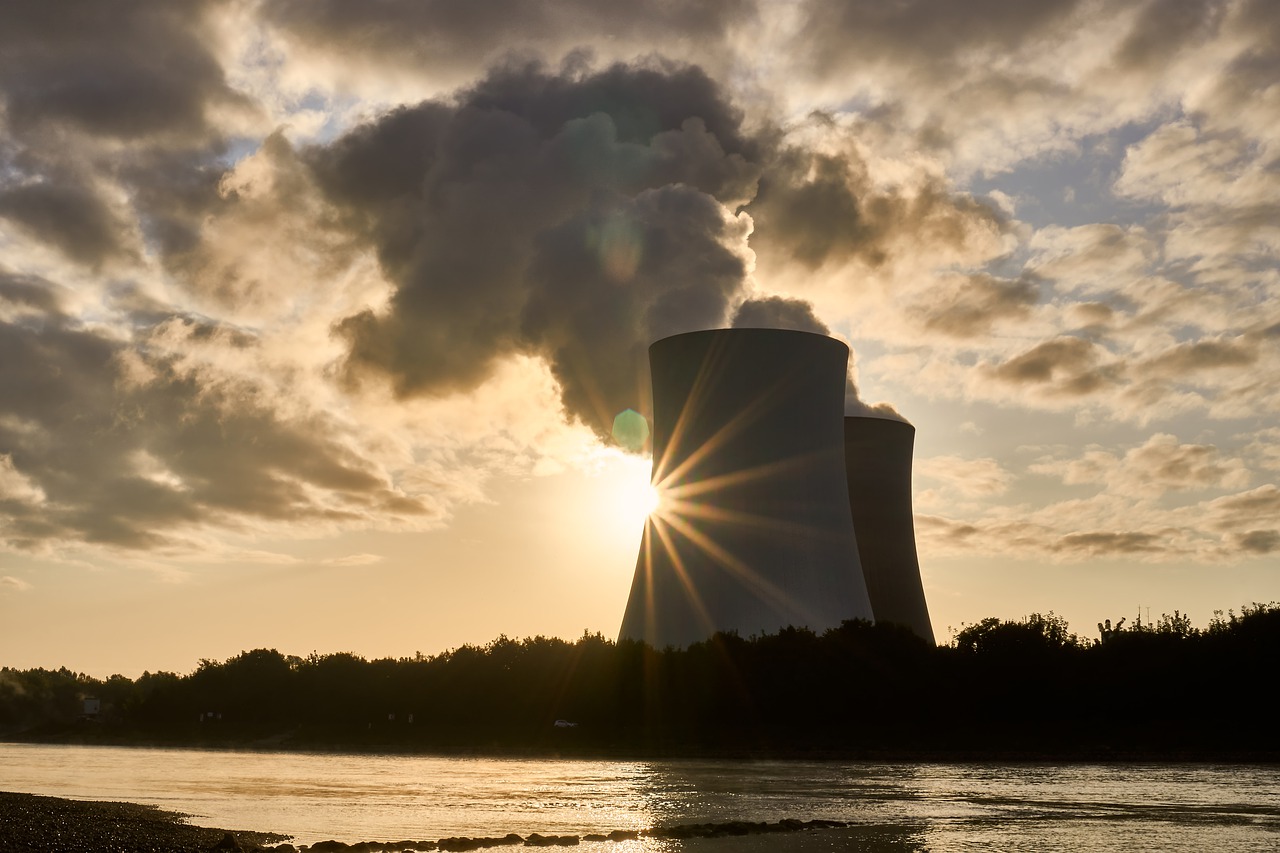With climate change and increased demand for energy, the world needs a solution quickly. Nuclear energy is a good option if used in the right way. Contrary to public perception, nuclear energy is actually the safest energy source in the world and more economically viable than solar and wind.
Climate change is an undeniable fact. Global temperatures are rapidly rising; 19 of the 20 hottest years on record have been since 2001, ocean temperatures are rising, and natural calamities like rain torrents, cyclones, hurricanes and floods have increased in frequency. Action is urgently needed.
A pertinent solution is to switch to less-polluting sources of energy generation: renewable energy. Activists and environmentalists have long been advocating a shift to green or renewable sources of energy, such as wind and solar energy. While this is a commendable effort, there are major issues with wind and solar energy. They are unlikely to be fast enough, large enough or cheap enough in the medium or short-term to keep up with demand – especially in developing nations that need to industrialize and will see increasing demand for energy.
But as the world burns and worldwide emissions remain unstoppable, we need to rethink our perceptions of nuclear energy. Critics have often said that nuclear energy is too dangerous and too risky. Massive disasters like those in Fukushima and Chernobyl only serve to highlight these risks. However, the fact is that in the short run, nuclear energy is the world’s safest bet. France and Sweden are the only advanced nations that have managed to substantially decrease carbon emissions – and they have done so on the back of nuclear energy. While more than 70 percent of France’s electricity comes from nuclear supplies, around 40 percent of Sweden’s is nuclear.
The end of the oil-and-coal era, as well as the ineffectiveness of solar and wind energy, means that nations with smaller land areas, lack of access to oil and a developing economy must consider nuclear power as a pragmatic alternative.
The nuclear conversation is dominated by green parties, but their arguments are more strongly influenced by ideology than by science. Common fears against nuclear energy are supremely overblown and its advantages are downplayed. This is because when one thinks of nuclear power, one does not think of modern power plants but of devastation and calamities: the bombings of Hiroshima and Nagasaki and the high-profile failures in Chernobyl and Fukushima. This is a gross misrepresentation of the facts.
Is Nuclear Energy Safe?
While some concerns, such as the management of nuclear waste, are understandable and substantive, other concerns are risible. A nuclear explosion of the kind that one sees in movies is physically impossible. The Chernobyl and Fukushima disasters were not nuclear explosions.
The Chernobyl plant had numerous and serious design flaws which modern plants do not have. The Fukushima disaster was a freak mix of a massive earthquake and tsunami which caused meltdowns, leading to a hydrogen explosion. While the safety measures and containment structures at Fukushima worked, newer plants are even better engineered. Some are designed to use molten salt instead of water so that the disaster at Fukushima would not repeat itself.
The Chernobyl incident resulted in less than 5000 deaths. At Fukushima, there were no fatalities and no radiation risk – unlike in Chernobyl – and the majority of the population has returned to the area. Compare these two high-profile nuclear disasters to the damage caused by coal and petrol. Over 2 million people die every year from air pollution and the harm caused by climate change. There have been many similar high-profile incidents in coal mines and oil pipelines involving far more deaths, including the Bhopal gas tragedy and the Banqiao dam collapse in China which killed hundreds of thousands of people.
Nuclear energy is actually the safest energy source in the world. Coal leads to 351 times more deaths than nuclear energy, oil accounts for 263 times more deaths, and gas 40 times more deaths. Nuclear plants aren’t just safer than other sources; they are strikingly safer.
New innovations promise to make nuclear energy an even safer and more sustained bet. A few exciting developments include smaller, more versatile-use reactors; more accident tolerant fuels that enhance safety and increase efficiency; and advanced manufacturing techniques that reduce capital costs. Fusion is often regarded as a safer and more productive option.
The Real Challenge
Radiation from a nuclear power plant is an exaggerated threat. We are constantly subjected to radiation from the natural environment, including from the sky, bananas and snacks. This helpful and humorous chart helps put these doses in comparative context. There is no significant radiation from nuclear plants or from stored waste. On the other hand, there is, in fact, more radioactive emission from a coal plant than from a nuclear plant.
Nuclear waste is a more legitimate cause for concern and should be addressed effectively. However, this isn’t a problem without a solution. If the total nuclear waste that has ever been generated was piled together, it would take up the area of one three-story football pitch. Over 90 percent of used nuclear fuel is recyclable and certain advanced reactors can eventually run on this spent fuel. In the last 55 years, in the U.S. alone, more than 2500 caskets of nuclear waste have been transported without a single mishap. Permanent storage facilities need to be planned and earmarked around the world for long-term storage.
Economically Viable
New-age nuclear power plants cost billions of dollars but the price is well worth paying. A 2014 Brookings report on the benefits of low and no-carbon technologies laid out the comparative cost-benefit analysis clearly. While solar costs have reduced dramatically in recent times, this is also because they are often subsidised heavily.
Furthermore, solar and wind generation is intermittent by nature. If we were to compare the costs and benefits of energy generation technologies – taking into consideration new emissions, capacity costs, new energy costs, avoided emissions, avoided energy costs and avoided capacity costs – the net benefit is the highest for gas, followed by nuclear energy.
So nuclear energy is, in fact, more economically viable than solar or wind energy.
In addition, consumers are, on average, increasing their appliance consumption, which also means that they are increasing energy consumption. In both developing nations and developed nations, people are, in general, demand inelastic – which means that they don’t cut energy consumption with an increase in price, largely due to monopolistic or oligopolistic energy markets.
However, if given an option, studies show that consumers are inclined to switch to alternative energy sources, including nuclear energy.
Different states eye nuclear power through different lenses – and although there are differing opinions, certain undeniable facts remain. With increasing demand for energy and the swift destruction brought by climate change, the world needs a solution quickly. Nuclear energy is a good option if used in the right way.
Environmentalists and activists must change their perceptions of nuclear energy. Governments should implement policies that encourage nuclear energy projects. While the energy industry has traditionally been slow to change, the public and government must wholeheartedly embrace this process of creative destruction.



